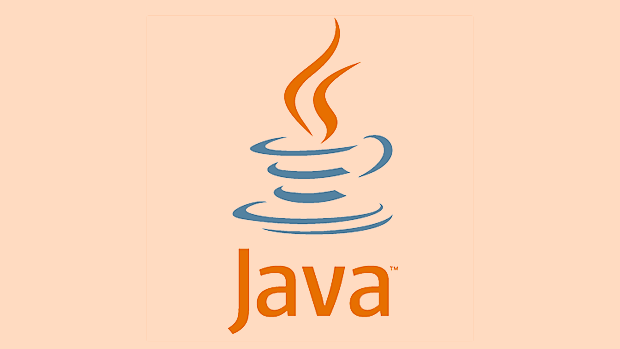Optional should only be used for return values ??and is not recommended as parameters or fields. 1. Using Optional in the return value can make it clear that the result may be empty, avoid null pointers and improve readability; 2. Using Optional in parameters and fields will increase complexity and may lead to serialization problems; 3. Over-necking of Optional will make the logic more complicated, and you should be judged with if first; 4. It is recommended to use of Nullable to create Optional to deal with uncertainty about whether there is a value.

In Java development, Optional is a container class that expresses "values ??that may or may not exist". It has been a controversial feature since Java 8: using it well can improve the readability and security of the code, while using it poorly will make the logic more complicated.

The key is: Optional should be used for return values, not as parameters or fields . Next, let's see how to use it.

1. Use Optional in the return value
This is the most recommended use scenario Optional . When you write a method whose result may be empty, use Optional to explicitly tell the caller: "This result may not be".
for example:

public Optional<User> findUserById(String id) {
// ...
}The benefits of doing this are:
- Avoid null pointer exceptions when returning
null - Remind the caller to deal with "no result" situations
- You can write more concise logic in conjunction with
ifPresent(),orElse()and other methods
Common operations include:
-
isPresent()determines whether there is a value -
get()gets the value (but make sure it exists first) -
orElse(default)returns the default value if there is no value -
orElseThrow(() -> new Exception())has no value to throw exception
However, it is recommended to use get() less and map() or flatMap() more for chain processing.
2. Do not use Optional in parameters and fields
Some developers will pass Optional as a parameter into a method or as a field type of a class, which is actually a misuse.
for example:
public void setUser(Optional<User> user) { ... }Doing so not only adds unnecessary packaging/unpacking operations, but can also lead to misunderstandings. If the parameter may be null, just let it be null, no additional encapsulation is required.
In addition, JSON serialization libraries like Jackson do not support Optional fields very much, which is prone to problems.
3. Avoid overuse of Optional
Sometimes you will see code like this:
Optional.ofNullable(user).ifPresent(u -> {
Optional.ofNullable(u.getAddress()).ifPresent(addr -> {
// ...
});
}); Although this nesting method of using Optional looks very "functional", it is actually very confusing to read, so it is better to directly judge null to be clearer.
So remember:
-
Optionalis to reduce null pointers, not to replace all null judgments - In complex logic, it is more intuitive to judge if it is honest and practical.
4. Several ways to create Optional
There are three main ways to create Optional objects:
-
Optional.of(value): value cannot be null, otherwise exception will be thrown -
Optional.ofNullable(value): Allow value to be null -
Optional.empty(): Create an empty Optional
ofNullable is usually recommended, especially if you are not sure if the value exists.
Basically that's it. Optional itself is not complicated, but it is easy to fall into the misunderstanding of "using for the sake of using it" when using it. Only by mastering its scope of application can it truly exert its value.
The above is the detailed content of When and How to Use Java Optional Correctly. For more information, please follow other related articles on the PHP Chinese website!

Hot AI Tools

Undress AI Tool
Undress images for free

Undresser.AI Undress
AI-powered app for creating realistic nude photos

AI Clothes Remover
Online AI tool for removing clothes from photos.

Clothoff.io
AI clothes remover

Video Face Swap
Swap faces in any video effortlessly with our completely free AI face swap tool!

Hot Article

Hot Tools

Notepad++7.3.1
Easy-to-use and free code editor

SublimeText3 Chinese version
Chinese version, very easy to use

Zend Studio 13.0.1
Powerful PHP integrated development environment

Dreamweaver CS6
Visual web development tools

SublimeText3 Mac version
God-level code editing software (SublimeText3)

Hot Topics
 Selecting Specific Columns | Performance Optimization
Jun 27, 2025 pm 05:46 PM
Selecting Specific Columns | Performance Optimization
Jun 27, 2025 pm 05:46 PM
Selectingonlyneededcolumnsimprovesperformancebyreducingresourceusage.1.Fetchingallcolumnsincreasesmemory,network,andprocessingoverhead.2.Unnecessarydataretrievalpreventseffectiveindexuse,raisesdiskI/O,andslowsqueryexecution.3.Tooptimize,identifyrequi
 What is the `enum` type in Java?
Jul 02, 2025 am 01:31 AM
What is the `enum` type in Java?
Jul 02, 2025 am 01:31 AM
Enums in Java are special classes that represent fixed number of constant values. 1. Use the enum keyword definition; 2. Each enum value is a public static final instance of the enum type; 3. It can include fields, constructors and methods to add behavior to each constant; 4. It can be used in switch statements, supports direct comparison, and provides built-in methods such as name(), ordinal(), values() and valueOf(); 5. Enumeration can improve the type safety, readability and flexibility of the code, and is suitable for limited collection scenarios such as status codes, colors or week.
 Applying Semantic Structure with article, section, and aside in HTML
Jul 05, 2025 am 02:03 AM
Applying Semantic Structure with article, section, and aside in HTML
Jul 05, 2025 am 02:03 AM
The rational use of semantic tags in HTML can improve page structure clarity, accessibility and SEO effects. 1. Used for independent content blocks, such as blog posts or comments, it must be self-contained; 2. Used for classification related content, usually including titles, and is suitable for different modules of the page; 3. Used for auxiliary information related to the main content but not core, such as sidebar recommendations or author profiles. In actual development, labels should be combined and other, avoid excessive nesting, keep the structure simple, and verify the rationality of the structure through developer tools.
 What is the JDK?
Jun 25, 2025 pm 04:05 PM
What is the JDK?
Jun 25, 2025 pm 04:05 PM
JDK (JavaDevelopmentKit) is a software development environment for developing Java applications and applets. It contains tools and libraries required to compile, debug and run Java programs. Its core components include Java compiler (javac), Java runtime environment (JRE), Java interpreter (java), debugger (jdb), document generation tools (javadoc) and packaging tools (such as jar and jmod). Developers need JDK to write, compile Java code and develop with the help of IDE; without JDK, Java applications cannot be built or modified. You can enter javac-version and java-version in the terminal
 VSCode debugger for Java setup guide
Jul 01, 2025 am 12:22 AM
VSCode debugger for Java setup guide
Jul 01, 2025 am 12:22 AM
The key steps in configuring the Java debugging environment on VSCode include: 1. Install JDK and verify; 2. Install JavaExtensionPack and DebuggerforJava plug-in; 3. Create and configure the launch.json file, specify mainClass and projectName; 4. Set up the correct project structure to ensure the source code path and compilation output are correct; 5. Use debugging techniques such as Watch, F8/F10/F11 shortcut keys and methods to deal with common problems such as class not found or JVM attachment failure.
 XML rules: Common errors to avoid
Jun 22, 2025 am 12:09 AM
XML rules: Common errors to avoid
Jun 22, 2025 am 12:09 AM
Methods to avoid XML errors include: 1. Ensure that the elements are nested correctly, 2. Escape special characters. Correct nesting avoids parsing errors, while escape characters prevent document corruption, using an XML editor can help maintain structural integrity.
 How do I set up VS Code for Java development?
Jun 29, 2025 am 12:23 AM
How do I set up VS Code for Java development?
Jun 29, 2025 am 12:23 AM
To use VSCode for Java development, you need to install the necessary extensions, configure the JDK and set up the workspace. 1. Install JavaExtensionPack, including language support, debugging integration, build tools and code completion functions; optional JavaTestRunner or SpringBoot extension package. 2. Install at least JDK17 and verify through java-version and javac-version; set the JAVA_HOME environment variable, or switch multiple JDKs in the status bar at the bottom of VSCode. 3. After opening the project folder, make sure the project structure is correct and enable automatic saving, adjust the formatting rules, enable code checking, and configure the compilation task to optimize the opening.
 Windows search bar not typing
Jul 02, 2025 am 10:55 AM
Windows search bar not typing
Jul 02, 2025 am 10:55 AM
When the Windows search bar cannot enter text, common solutions are: 1. Restart the Explorer or computer, open the Task Manager to restart the "Windows Explorer" process, or restart the device directly; 2. Switch or uninstall the input method, try to use the English input method or Microsoft's own input method to eliminate third-party input method conflicts; 3. Run the system file check tool, execute the sfc/scannow command in the command prompt to repair the system files; 4. Reset or rebuild the search index, and rebuild it through the "Index Options" in the "Control Panel". Usually, we start with simple steps first, and most problems can be solved step by step.






